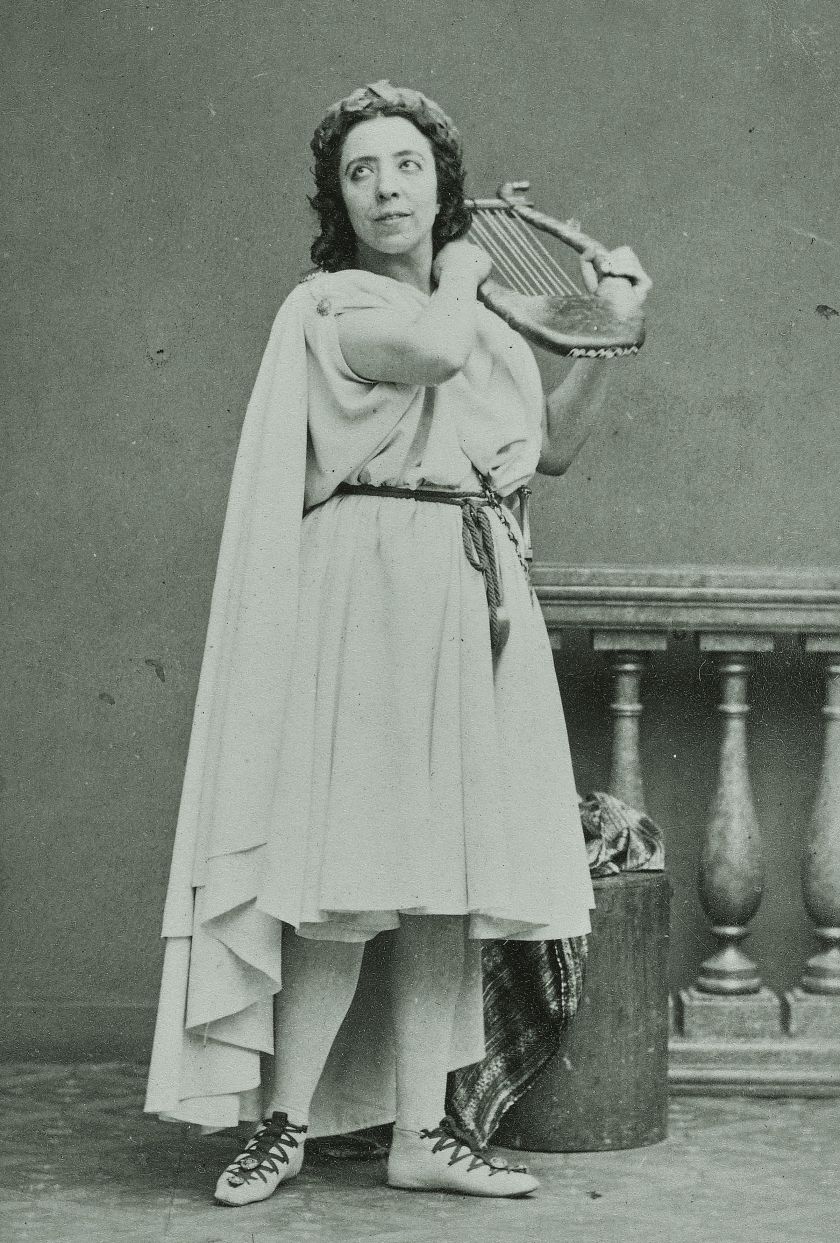
- Der Erfolg des Orphée währt fort. Es ist himmlisch schön, ich habe schon mehr als 20 Mal geweint. Mme Viardot ist von idealer Schönheit in dieser Rolle.
- Mein Kostüm wurde sehr schön gefunden — weiße Tunika bis zu den Knien. Weißer Mantel, an den Schultern zurückgehalten wie bei Apoll. Langes lockiges Haar mit Lorbeerkranz. Eine goldene Kette, um das Schwert zu halten, dessen Scheide rot ist. Eine rote Kordel als Gürtel — rot geschnürte weiße Schaftstiefel.
Zur Produktion
Ein Jahr nach Jacques Offenbachs Erfolg mit seiner Opéra-bouffon Orphée aux enfers eroberte die Erzählung über den göttlichen Sänger Orpheus 1859 erneut Paris, und zwar in seiner ursprünglichen tragischen Gestalt. Unter Verwendung von Glucks Orfeo ed Euridice (1762) und Orphée et Eurydice (1774) hatten Hector Berlioz und Pauline Viardot eine Mischfassung gefertigt, die einerseits für Viardots Stimme und dramatische Gestaltungsfähigkeit maßgeschneidert war und zudem ganz auf die Figur des Orpheus fokussierte. Mit 138 Aufführungen feierte nicht nur die Viardot als (erster weiblicher) Orpheus in Frankreich Triumphe, sondern wurde eine Gluck-Renaissance eingeläutet. „Es war ein Riesenspektakel — ein Fest, wie ich es noch nie in Paris gesehen habe — die Rolle des Orphée passt zu mir, als wäre sie für mich geschrieben worden“, schrieb Viardot nach der Premiere an ihren engen Freund Julius Rietz. Wie Zeugnisse belegen, rührte sie mit ihrer Darstellung der „ungeheuersten Seelenschmerzen“ das Publikum zu Tränen: „Es ist himmlisch schön, ich habe schon mehr als 20 Mal geweint“, bekannte etwa Berlioz.
In seiner Bühnenversion überträgt der Intendant und Chefchoreograf des Hamburg Ballett, John Neumeier, die mythologische Handlung in die Ballettwelt der Gegenwart.
